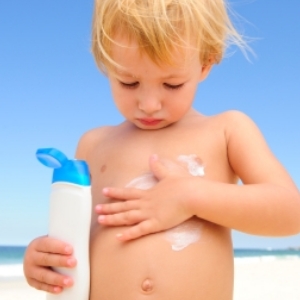
It was recently found that one in every four sunscreen products endorsed by CANSA is lacking when it comes to offering adequate protection against the sun.
For a country with one of the highest rates of malignant melanoma in the world, this is an alarming discovery and South Africans are urged to ensure that they exercise extra caution when it comes to protecting themselves from the sun this summer.
This is according to Graham Anderson, Principal Officer at Profmed, who says since 2005, all sunscreens with the CANSA Seal of Recognition (CSOR) had to give protection against UVA and UVB radiation in a ratio of 0.4/1.
High demand for sun protection
However, new research released by CANSA has found an increased correlation between UVA exposure and the onset of malignant melanoma or skin cancer, as well as non-optimal UVA protection provided by existing sunscreens. “This has led to a worldwide demand for sunscreen with improved UVA protection properties,” explains Anderson.
Anderson says the potential implications of this finding are alarming since most skin cancers are caused by long term exposure to the sun. In light of this, he says it is crucial that people know what to look for in sunscreen products in order to ensure that the protection they are using is adequate.”
Choosing sunscreen
Anderson explains that “sunlight is made up of UVA (which causes skin ageing), UVB (causes skin to burn and can cause non melanoma skin cancer) and UVC rays. He stresses that when choosing a sunscreen one should choose one with both UVA and UVB protection and an SPF factor of 15 or higher which guidelines are also in accordance with CANSA.
However, because the ratio of this protection is still being disputed, he urges South Africans to take extra steps to protect themselves against UVA rays as the country heads into summer.“All CANSA Seal-bearing sunscreens manufactured after 31 March 2013 will have to meet with the new UVA protection standard – and be obliged to exhibit the new CANSA SunSmart Seal. The concern is that this date is only after the hottest, most dangerous period of our summer,” he says.
Anderson says that some people easily spend up to 6 hours or more in the sun per day during the summer months. He urges that people try as far as possible to stay in the shade during 10am and 4pm as this is when people are most exposed to harmful UV rays from the sun.
“Wearing loose-fitting long-sleeved shirts and long pants made from tightly woven fabric offer the best protection from the sun's UV rays. A wet T-shirt offers much less UV protection than a dry one and darker colours may offer more protection than lighter colours. Wear a hat with a wide brim to shade the face, head, ears, and neck and sunglasses that wrap around and block as close to 100% of both UVA and UVB rays as possible,” he says.
Additional protection
He says that this additional protection is particularly important for children. “The ultraviolet light in sunlight damages the DNA in the skin cells and this damage usually happens before the age of 18, sometimes years before a cancer develops,” says Anderson.
“It has always been preached that the use of the correct sunscreen (one that provides adequate UVB as well as SPF protection) would rapidly reduce ones chances of contracting melanoma but wearing inadequate protection will obviously negate the protection from the harmful rays of the sun,” he adds.
Furthermore, he warns that babies under the age of one should have no direct exposure to the sun. According to the Cancer Association of South Africa, it is estimated that 100 million people will die from cancer in the next decade. Five per cent of this number will be as a result of malignant melanoma.
Anderson says melanoma is a type of skin cancer which develops from the pigment producing cells in the skin. It spreads rapidly and can be fatal if it is not detected early. There are four stages to melanoma and all four stages require surgery. “Melanoma is also a recurring disease and one would require regular follow-ups with a dermatologist or oncologist to ensure that the disease has not spread,” concludes Anderson.
(Press release, September 2012)
Read more:




 Publications
Publications
 Partners
Partners














